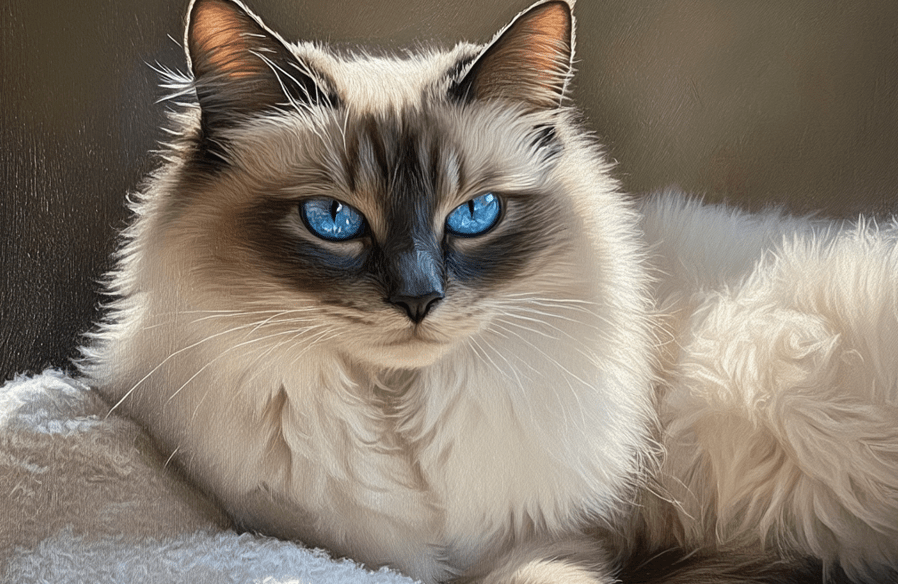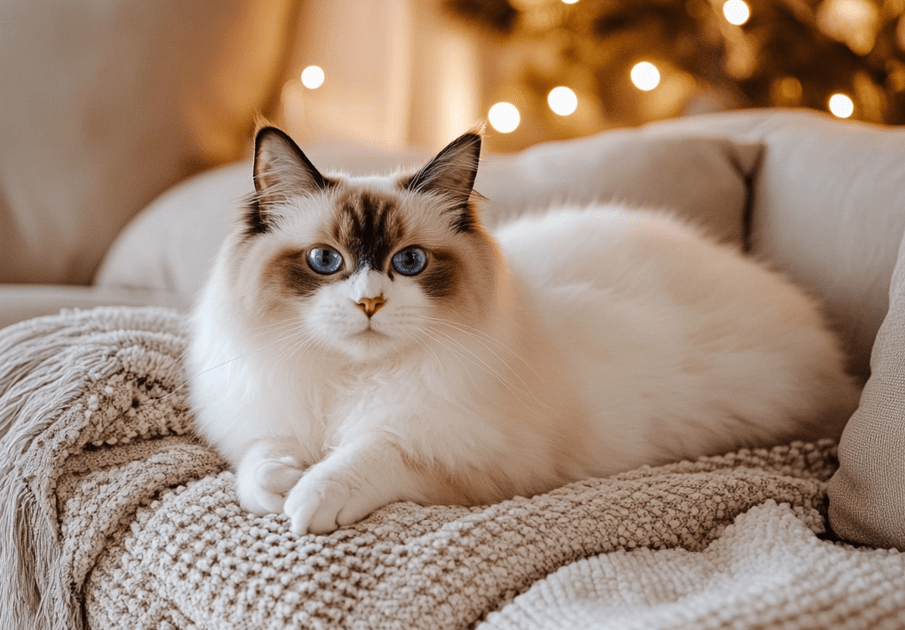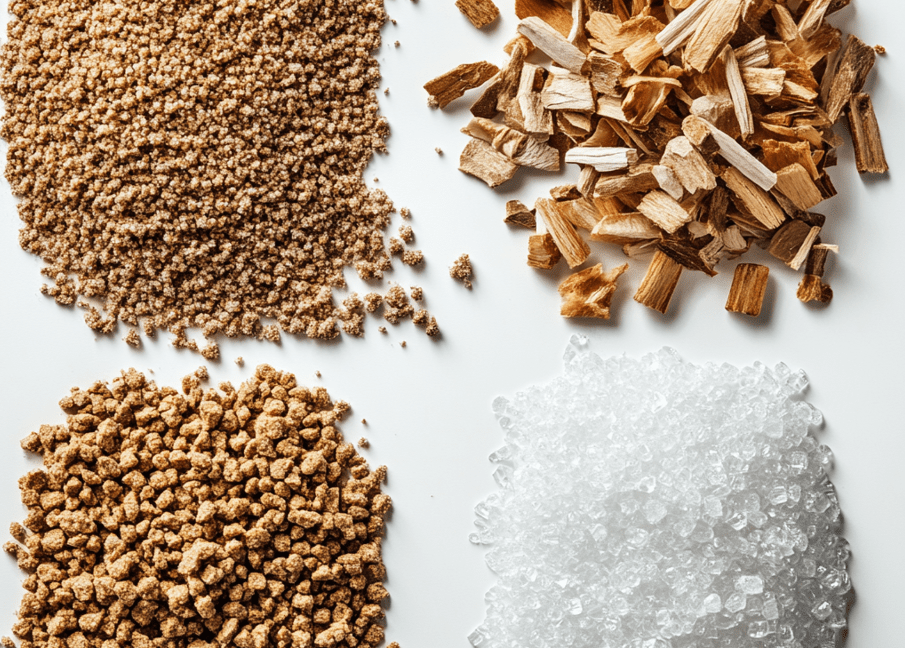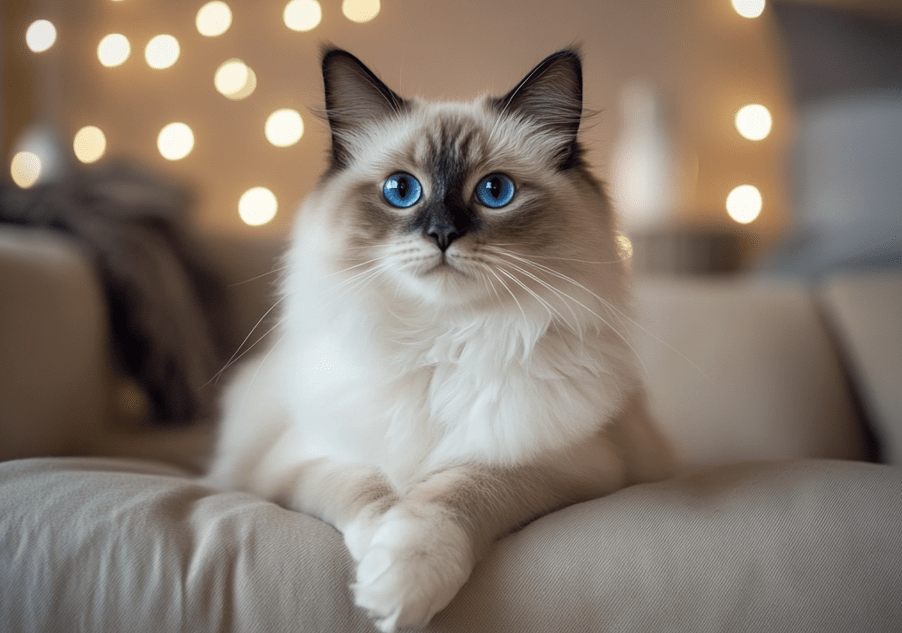
Matted fur in Ragdoll cats is a common issue that can cause discomfort and stress for both the cat and the owner. Ragdolls, with their luxurious, semi-long coats and affectionate personalities, are prone to fur tangles if not properly groomed. Addressing matted fur painlessly requires patience, the right tools, and a gentle approach to keep your Ragdoll comfortable and healthy. This comprehensive guide explores proven techniques, expert tips, and preventive measures to manage and prevent matted fur, ensuring your Ragdoll’s coat remains soft, shiny, and tangle-free.
Understanding Matted Fur in Ragdoll Cats
Matted fur occurs when loose hair, dirt, or debris tangle together, forming tight clumps in a cat’s coat. For Ragdolls, whose plush, dense fur is one of their defining traits, matting is particularly common in areas like the belly, armpits, and behind the ears. Left untreated, mats can pull on the skin, causing pain, irritation, or even infections. They can also hide underlying skin issues, making early detection critical.
Ragdolls are indoor cats by nature, and their relaxed demeanor can make them less likely to self-groom thoroughly. Combined with their thick undercoat, this increases the risk of matting. By learning how to deal with matted fur in Ragdoll cats painlessly, you can maintain their coat’s beauty and support their overall well-being.
Why Matted Fur Is a Concern for Ragdolls
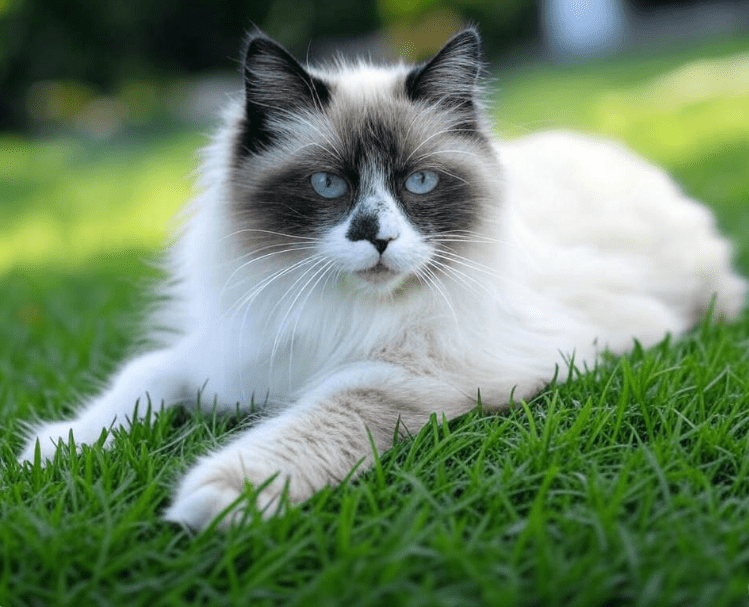
Matted fur isn’t just a cosmetic issue; it can have serious health implications:
Discomfort and Pain: Mats tug at the skin, causing discomfort during movement or grooming.
Skin Irritation: Trapped moisture or debris under mats can lead to hot spots or infections.
Reduced Mobility: Severe matting in areas like the legs or tail can restrict movement.
Parasite Infestation: Mats can hide fleas or ticks, making them harder to detect.
Stress: Painful grooming sessions can make your Ragdoll anxious or resistant to handling.
Addressing matting promptly and gently is essential to keep your Ragdoll happy and healthy. The following sections outline five key strategies to manage matted fur effectively.
1. Use the Right Grooming Tools
Choosing the appropriate tools is the foundation of painless mat removal. Ragdolls have sensitive skin, so tools must be gentle yet effective.
Dematting Combs
A dematting comb with rounded, serrated blades is ideal for cutting through mats without pulling the skin. Look for combs designed for long-haired cats, with wide-spaced teeth for initial detangling and finer teeth for smaller mats.
Slicker Brushes
Slicker brushes with fine, angled bristles are excellent for smoothing the coat and preventing new mats. Use a light touch to avoid scratching your Ragdoll’s skin.
Wide-Tooth Combs
A wide-tooth comb is perfect for daily grooming and working through minor tangles before they become mats. It’s less intimidating for cats wary of grooming.
Grooming Gloves
For Ragdolls that dislike brushes, grooming gloves offer a gentle alternative. They mimic petting while removing loose fur, making the experience soothing.
Safety Tip
Never use scissors to cut out mats, as it’s easy to accidentally nick the skin. If a mat is too tight or close to the skin, consult a professional groomer or veterinarian.
2. Master the Art of Gentle Detangling
Detangling matted fur requires patience and a methodical approach to avoid causing pain or stress.
Prepare Your Ragdoll
Start by calming your cat with gentle petting or a favorite treat. Choose a quiet, comfortable space for grooming. If your Ragdoll is anxious, consider grooming in short sessions over several days.
Locate and Assess Mats
Run your fingers through your cat’s coat to identify mats. Focus on high-risk areas like the belly, behind the ears, and under the legs. Assess the size and tightness of each mat to determine the best approach.
Detangling Technique
Step 1: Apply a cat-safe detangling spray or a small amount of cornstarch to loosen the mat. This reduces friction and makes the fur easier to separate.
Step 2: Hold the mat at its base, close to the skin, to prevent pulling. Use your fingers or a dematting comb to gently tease apart the edges of the mat.
Step 3: Work from the outside of the mat inward, breaking it into smaller sections. Be patient, and stop if your cat shows signs of discomfort.
Step 4: Once the mat is loose, brush the area with a slicker brush to smooth the fur and remove any remaining debris.
Post-Grooming Care
Reward your Ragdoll with treats, praise, or playtime to create positive associations with grooming. Check the skin for redness or irritation, and apply a vet-approved soothing balm if needed.
3. Establish a Regular Grooming Routine
Prevention is the best way to manage matted fur in Ragdoll cats. A consistent grooming routine keeps their coat healthy and reduces the likelihood of tangles.
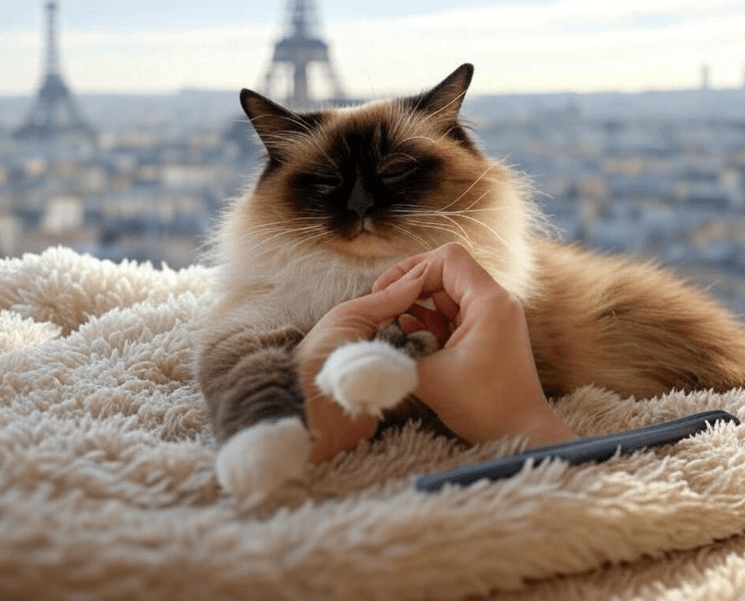
Daily Brushing
Brush your Ragdoll for 5-10 minutes daily using a slicker brush or wide-tooth comb. Focus on areas prone to matting, and always brush in the direction of hair growth to avoid discomfort.
Weekly Deep Grooming
Once a week, perform a thorough grooming session. Check for early signs of matting, trim nails, clean ears, and inspect the skin for abnormalities. Use this time to bond with your cat and make grooming a positive experience.
Bathing When Necessary
Ragdolls generally don’t need frequent baths, but a bath every 2-3 months can help remove loose fur and prevent matting. Use a cat-specific shampoo and ensure the coat is completely dry afterward, as damp fur is more prone to tangling.
Seasonal Considerations
Ragdolls shed more during spring and fall. Increase brushing frequency during these periods to manage loose fur and prevent mats.
4. Address Underlying Causes of Matting
Matting can be exacerbated by factors beyond grooming habits. Identifying and addressing these issues can make mat management easier.
Diet and Nutrition
A balanced diet supports a healthy coat. Feed your Ragdoll high-quality, high-protein cat food with omega-3 and omega-6 fatty acids to promote skin and coat health. Consult your vet about supplements like fish oil if your cat’s coat is dry or prone to tangling.
Hydration
Ensure your Ragdoll drinks enough water to maintain skin hydration. A cat water fountain can encourage drinking, reducing the risk of dry, brittle fur that mats easily.
Health Conditions
Certain medical issues, such as obesity, arthritis, or skin allergies, can contribute to matting. Obese Ragdolls may struggle to groom hard-to-reach areas, while arthritis can limit mobility. Schedule regular vet checkups to catch and treat these conditions early.
Environmental Factors
Dry indoor air, especially in winter, can lead to static and tangling. Use a humidifier to maintain optimal humidity levels, and avoid exposing your Ragdoll to dusty or dirty environments that can contribute to matting.
5. Know When to Seek Professional Help
Some mats are too severe for home grooming, and attempting to remove them can cause pain or injury. Knowing when to seek professional help is crucial.
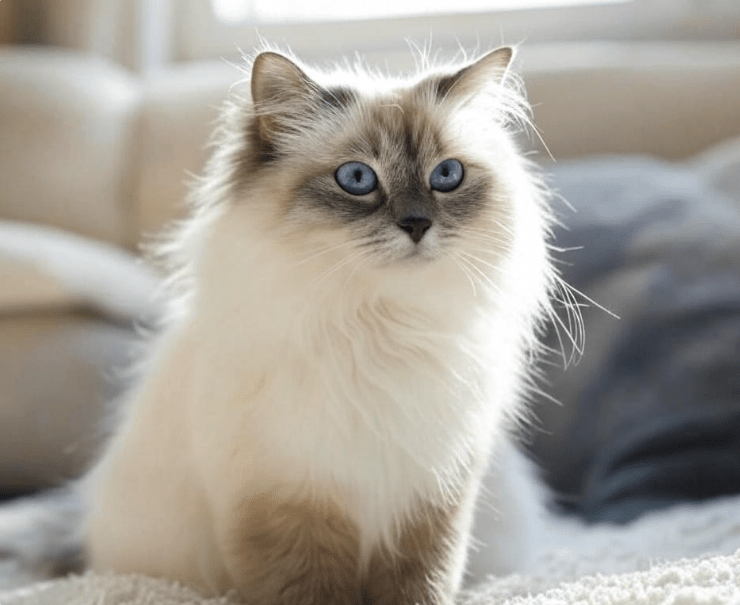
Signs You Need a Groomer
1.Mats are tight against the skin or cover large areas.
2.Your Ragdoll is distressed or aggressive during grooming attempts.
3.The skin under the mat is red, raw, or infected.
4.Mats are in sensitive areas like near the eyes or genitals.
Choosing a Professional
Look for a cat-specific groomer experienced with long-haired breeds like Ragdolls. Ask about their methods to ensure they prioritize your cat’s comfort. Some groomers offer sedation-free grooming for anxious cats.
Veterinary Intervention
If mats are accompanied by skin abnormalities, excessive scratching, or lethargy, consult a veterinarian. They can diagnose underlying issues and may need to shave severe mats under sedation for your cat’s safety.
Additional Tips for Painless Mat Management
Start Young: Introduce grooming to Ragdoll kittens early to build tolerance. Short, positive sessions help them view grooming as routine.
Use Positive Reinforcement: Reward your cat with treats or play after grooming to reduce stress and encourage cooperation.
Check for Foreign Objects: Mats can form around small objects like burrs or string. Inspect mats carefully to remove any debris.
Monitor Grooming Behavior: If your Ragdoll stops grooming or over-grooms, it may indicate stress or health issues. Address these promptly with your vet.
Invest in Quality Products: High-quality grooming tools and cat-safe products last longer and are gentler on your Ragdoll’s coat and skin.
Common Mistakes to Avoid
Using Human Grooming Products: Human shampoos or detanglers can irritate a cat’s skin. Always use cat-specific products.
Pulling Mats: Tugging at mats causes pain and can tear the skin. Always work gently and hold the fur near the skin.
Skipping Regular Grooming: Infrequent grooming allows mats to worsen. Consistency is key to prevention.
Ignoring Stress Signals: If your Ragdoll hisses, swats, or hides during grooming, take a break and reassess your approach.
Delaying Professional Help: Waiting too long to address severe mats can lead to health complications. Act promptly when mats are unmanageable.
Why Ragdoll Coat Care Matters
Ragdolls are cherished for their stunning appearance and loving nature. A well-maintained coat not only enhances their beauty but also reflects their overall health. By addressing matted fur in Ragdoll cats painlessly, you’re ensuring their comfort, preventing health issues, and strengthening your bond through positive grooming experiences.
Conclusion
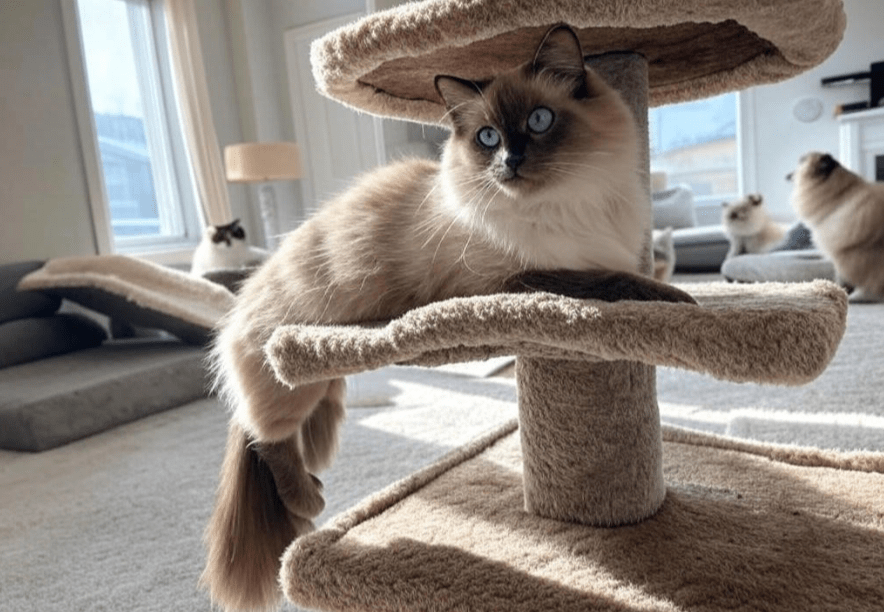
Dealing with matted fur in Ragdoll cats painlessly is achievable with the right tools, techniques, and mindset. By using gentle grooming tools, mastering detangling methods, establishing a regular grooming routine, addressing underlying causes, and seeking professional help when needed, you can keep your Ragdoll’s coat healthy and mat-free. Prevention is the ultimate goal, and a consistent, compassionate approach will ensure your Ragdoll remains comfortable and happy.
Start implementing these strategies today, and watch your Ragdoll thrive with a glossy, tangle-free coat. With patience and care, you’ll turn grooming into a rewarding experience for both you and your feline companion.

